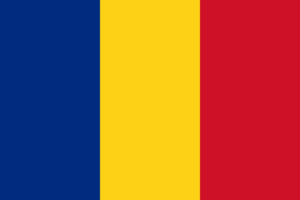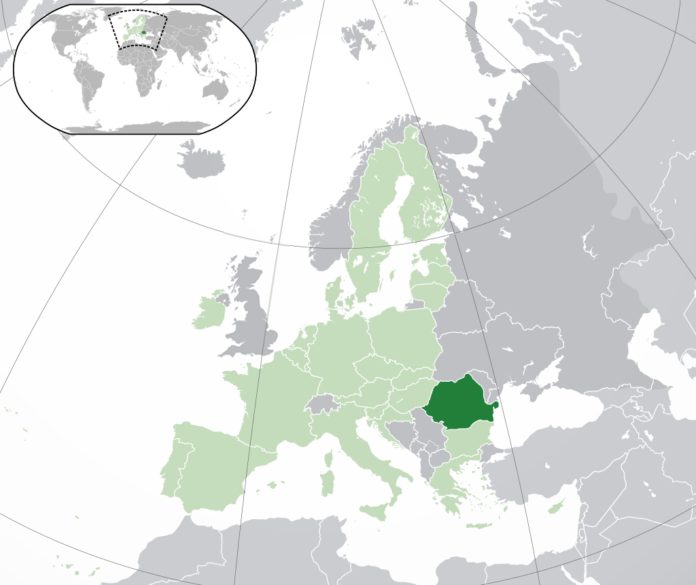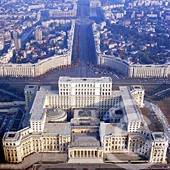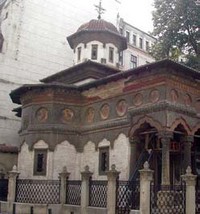Receive our newsletter
Your e-mail address is only used to send you our newsletter and information about the activities of Strasbourg Europe. You can always use the unsubscribe link included in the newsletter.




 Bucharest is located on the plain of Walachia. According to a legend, a shepherd whose name is Bucur founded a village on the left bank of the Dambovita, giving his name to the future capital of Romania in the process. Despite this, its current name only appeared for the first time in a document signed in 1459 by the famous Prince Vlad Tepes (Vlad the Impaler). Bucharest officially became the capital of Romania in 1862. Its economic expansion in the late 19th century was encouraged by its geographical location between Central Europe and Asia. It has remained the primary economic center of the country ever since.
Bucharest is located on the plain of Walachia. According to a legend, a shepherd whose name is Bucur founded a village on the left bank of the Dambovita, giving his name to the future capital of Romania in the process. Despite this, its current name only appeared for the first time in a document signed in 1459 by the famous Prince Vlad Tepes (Vlad the Impaler). Bucharest officially became the capital of Romania in 1862. Its economic expansion in the late 19th century was encouraged by its geographical location between Central Europe and Asia. It has remained the primary economic center of the country ever since.
Its modern urban organisation also dates from this period, with its wide avenues and attractive districts which were then inhabited by the nobility and the new bourgeoisie, earning it the nickname of the “Little Paris of the East” between the wars. The town’s historical heart suffered massively from the urban policies imposed by Ceausescu, giving way to the colossal “House of the People” (today the Romanian Parliament) and the Unirea Boulevard.
The town today offers visitors a lively and cosmopolitan atmosphere which is half eastern and half western, combined with its rich and diverse cultural life.
The Parliament © European Commission

 The sculptor Constantin Brancusi was born in Pestisani Gorj in 1876 to a rural family. After his studies at the Bucharest School of Fine Arts, he worked in Vienna and in Munich before settling in Paris in 1904. His first work showed the influence of Auguste Rodin, but from 1908 onwards (the date of the first version of The Kiss) his style changed radically. The example of the primitive arts drove him to seek out pure, simple, and plain shapes as seen in the ovoid shapes of Mademoiselle Pogany, or that of the elongated cylinder of Bird in Space.
The sculptor Constantin Brancusi was born in Pestisani Gorj in 1876 to a rural family. After his studies at the Bucharest School of Fine Arts, he worked in Vienna and in Munich before settling in Paris in 1904. His first work showed the influence of Auguste Rodin, but from 1908 onwards (the date of the first version of The Kiss) his style changed radically. The example of the primitive arts drove him to seek out pure, simple, and plain shapes as seen in the ovoid shapes of Mademoiselle Pogany, or that of the elongated cylinder of Bird in Space.
Seeking to sculpt ideas more than reality, he achieved abstraction and shook the world of traditional sculpture. Brancusi’s sculptures gained international renown in 1913 during the great modern art exhibition of New York known as the “Armory Show”. In his piece the Endless Column (1937), created with a combination of identical modules, Brancusi created a sculpture of superposed and repetitive shapes. He painstakingly polished the outer surface of his works, giving light a key role to play in the dematerialisation of the sculpture’s volume. Brancusi died in Paris on March 16, 1957. His work inspired great contemporary artists such as Hans Arp and Archipenko or Henry Moore.
Your e-mail address is only used to send you our newsletter and information about the activities of Strasbourg Europe. You can always use the unsubscribe link included in the newsletter.
Information Center
on the European Institutions (CIIE)
Europe Direct Information Center
All rights reserved to the CIIE
Non-profit organization
Mailing address
1 allée Kastner
67000 Strasbourg
France
Visitors entrance
8 rue Boecklin
67000 Strasbourg
France
To provide the best experiences, we use technologies such as cookies to store and/or access device information. Consenting to these technologies will allow us to process data such as browsing behavior or unique IDs on this site. Failure to consent or withdrawing consent may adversely affect certain features and functions.
Europe Direct network
The CIIE team
Contact information and opening hours
Lieu d’Europe
The CIIE offices
Contact us
CIIE’s Documentation Centre & Publications
School presentations & Activities
Borrowing of learning material
Activities for the general public
Institutions of the European Union in Strasbourg
Institutions Under the Authority of the Council of Europe
Other European Organisations in Strasbourg
Sessions of the European institutions in Strasbourg
Visiting the institutions
Map of the European district of Strasbourg
Institutions in Strasbourg in photos
Discover artistic Europe
National holidays of the member states of the Council of Europe